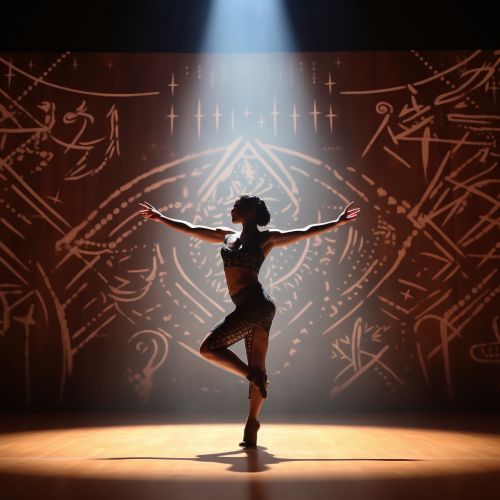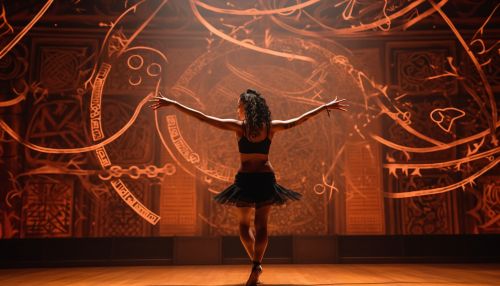Dance notation
Introduction
Dance notation is the symbolic representation of human dance movement and form, using methods such as graphic symbols and figures, path mapping, numerical systems, and letter and word notations. This complex system is used to document dance and choreographic processes and performances for purposes of reconstruction, education, and analysis.
History
The history of dance notation dates back to the 15th century, with the earliest dance notation system being the European Feuillet notation. This system was developed by Pierre Beauchamp and published by Raoul-Auger Feuillet, which was widely used in Baroque dance. The system used a combination of symbols to represent the path of the dancer and the sequence of steps.
In the 19th century, the invention of the Labanotation by Rudolf Laban marked a significant development in the field of dance notation. Labanotation, also known as Kinetography Laban, is a system that records movement in terms of spatial models and weight, time, and flow attributes. It is used extensively in contemporary dance.
Types of Dance Notation
There are several types of dance notation, each with its own unique system of symbols and methods for recording movement.
Labanotation
Labanotation is a notation system used to record all forms of movement. It was developed by Rudolf Laban and his collaborators in the early 20th century. Labanotation uses geometric symbols to represent the direction and level of a movement, the part of the body executing the movement, and the dynamics of the movement.
Benesh Movement Notation
Benesh Movement Notation (BMN) is a dance notation system used internationally for classical ballet. It was developed by Joan and Rudolf Benesh in the 1950s. BMN uses a five-line stave, similar to music notation, to record the position of the dancer's body in space.
Eshkol-Wachman Movement Notation
Eshkol-Wachman Movement Notation (EWMN) is a notation system developed by Noa Eshkol and Abraham Wachman in Israel. It uses a system of numbers and letters to represent the body parts and their movement in space.
Importance of Dance Notation
Dance notation plays a crucial role in the preservation and transmission of dance works. It allows for the accurate documentation of choreography, ensuring that dances can be accurately reconstructed and performed long after their creation. Notation also aids in the analysis and study of dance, providing a tangible record of dance works for scholars and researchers.
Challenges and Criticisms
Despite its importance, dance notation has faced several challenges and criticisms. One of the main criticisms is that notation cannot fully capture the nuances and subtleties of dance, such as the dancer's emotion and the specific quality of movement. Additionally, learning and using dance notation can be time-consuming and complex, which may deter some from using it.
Future of Dance Notation
With advancements in technology, the future of dance notation looks promising. Digital dance notation, such as the DanceForms software, allows for the creation of 3D animations of choreography. This not only makes the notation process more efficient but also provides a more comprehensive visual representation of the dance.
See Also


